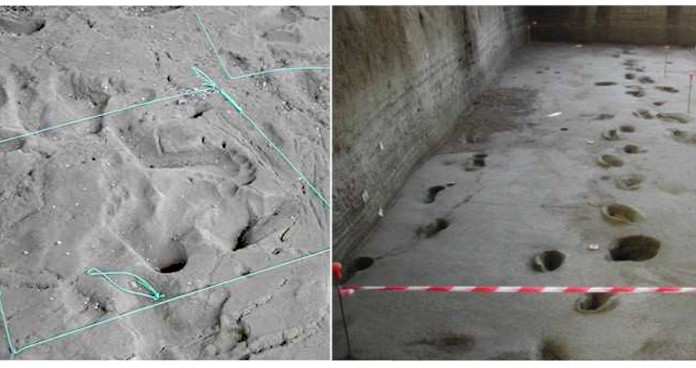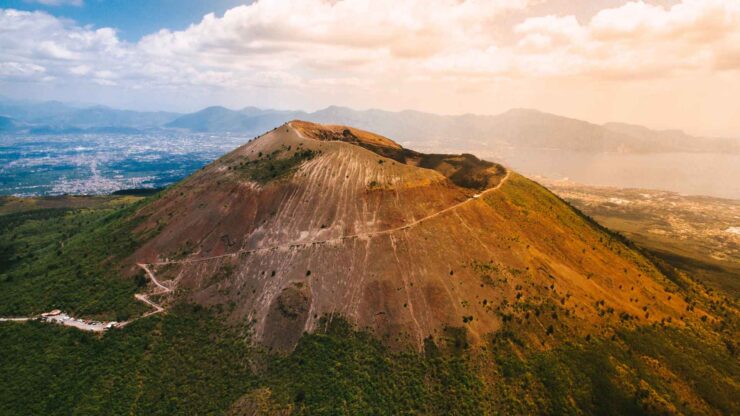Afragola, discovered while building a high-speed rail line near to Naples, offers a rare look at life in the Campania region.
Afragola, like Pompeii, was encased in many feet of ash, mud, and silt, which preserved the site so well that archaeologists were able to determine the season of the tragedy from the remnants of a food storage space.
According to the report of Good News Network, the site, which spans over 1.2 acres (5,000 square meters), has well-preserved footsteps of fleeing people and children.
Dr. Tiziana Matarazzo of the Connecticut University, said, “The site is exceptional, because Afragola was buried by a gigantic eruption of Vesuvius and it tells us a lot about the people who lived there, and the local habitat.”
“In this case, by finding fruits and agricultural materials, we were able to identify the season of the eruption, which is usually impossible.”
The eruption unfolded in stages, beginning with a tremendous explosion that blew debris away from the village to the northeast. Because of this, the villagers had a chance to flee, which is why preserved footprints rather than bodies, as in the case of Pompeii, were found before the wind changed and blew ash and seawater over the village, mainly dispersing to the west and northwest up to a distance of about 15 miles (25 km) from the volcano.
“This last phase is also what completely buried the village. The thick layer of volcanic material replaced the molecules of the vegetal macro-remains and produced perfect casts in a material called cinerite.”



Due to these factors, the materials remained stable even after many millennia. “Leaves that were in the woods nearby were also covered by mud and ash which was not super-hot, so we have beautiful imprints of the leaves,” said Dr. Tiziana.
According to the archaeologists, the settlement provides a unique view into early Bronze Age life in Italy.
“In Campania at this time, we have huts, but in Greece, they had palaces. These people probably lived in groups with maybe one or more persons as the head of the group.”
In addition, there was one storage structure in the settlement where all of the grains, various agricultural items, and fruits were gathered from neighboring woods to be stored and likely shared with the entire community. The plant food storage caught fire, unlike the other homes in the settlement, most likely due to a pyroclastic flow. It collapsed and carbonized the stored vegetables inside, preserving the remains for thousands of years.
Imprints of leaves found at the base of trees, as well as ripe fruit, indicate the harvest season. According to Matarazzo, the Bronze Age Campanian Plain was a haven for a wide range of food sources. These included a variety of grains and barley, hazelnuts, acorns, wild apples, dogwood, pomegranates, and cornelian cherries.
Matarazzo said that future studies would concentrate on animal bones discovered on the site, such as goats, pigs, and fish, as well as footprints.
“The eruption rose to basically the flight altitude of airplanes. It was unbelievable. This eruption was so extraordinary that it changed the climate for many years afterward. The cover of ash was so deep that it left the site untouched for 4,000 years — no one even knew it was there. Now we get to learn about the people who lived there and tell their stories.”
